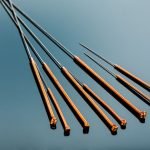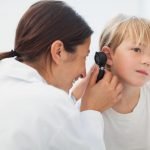Patient Compliance in Joint Custodial Living Arrangements
Christopher Maloney, ND
Where does a holistic treatment end? At what point does the position of Naturopathic Doctor blend into that of a case worker, and what is our obligation to those members of the family who aren’t paying the medical bills but who do have visitation rights? The legal definition of custodial parent applies, but when the custodial parent requests creating understanding and cooperation in a non-custodial parent, the position of the doctor becomes less well defined.
I am comfortable defining holistic treatment as: “what is in the best interests of the patient,” in this case the child. Those interests are best served by creating an environment of trust and consistency whenever possible.
TJ presented with a macular rash over much of his body. He was in relatively good spirits, and the mother informed me her pediatrician had said she was to apply steroid cream as necessary, and wait for him “to outgrow it.” But she couldn’t help thinking that food might have something to do with the rash. A conservative estimate is that 40% of children with atopic dermatitis have food allergy.1 A small study found that about a third of food allergies are milk allergy.2 The milk allergy can be caused by a nursing mother consuming milk.3
Previous dermatological RAST testing had proved less than useful, because TJ reacted to everything and inflamed his whole body as well as the testing area.
In the initial visit, we discussed the possibilities of food allergy and environmental allergy. TJ’s mom had noted a recent change for the worse since closing up the trailer for the winter. The trailer was old and was heated by propane.
We discussed the combination of internal and external factors that might impact TJ. His mother was determined to clean the trailer ducts and we discussed plans for shifting locations in the near future. In the office, TJ loved DHA Junior (Nordic Naturals) so we started him on that. Mom was to keep a journal to document outbreaks, as well as to provide me with digital photographs of outbreaks if we were unable to see each other. Money was a major obstacle to repeated visits, so I put her in charge of day to day monitoring. In our discussion, it became clear that TJ experienced immediate flare-ups to many food substances, which turned his face red, and then appeared at the other end six to eight hours later, inflaming his rectal area. TJ’s mother was very excited by the idea of applying a dab of food to a small area on the inside of the cheek, and then delaying the rest of the food for a few minutes to see if inflammation occurred. This simple innovation resolved a chronic diaper rash that has not recurred since.
Externally, TJ’s mother was already avoiding all perfumes. We furthered this to include laundry detergent, colognes, and bath soaps. She had been bathing TJ every day with soap, and we stopped this. The skin barrier in an infant is unusually sensitive and individuals with atopic dermatitis may have a further deficiency in ceramide production.4 I had TJ’s mom use a variety of moisturizers, many of which he was immediately reactive to. Instead, she began adding a single probiotic capsule to TJ’s bathwater, as well as adding probiotics to TJ’s food. This was essential to treatment, as the balance of bifidobacteria versus Clostridia in the neonatal flora appears to determine the allergic status in an infant.5
TJ’s mother began a tremendous task of cleaning the trailer, installing an air filter, and monitoring all of TJ’s food for possible inflammatory factors. Within two weeks, she was happy to report almost complete resolution of the rash. Unfortunately, TJ’s father then had TJ for the weekend. TJ’s father had recently gained visitation rights, which the mother supported, but TJ’s father did not believe the rash had anything to do with food or environmental factors.
TJ, of course, returned to his mother with a full body rash. He had been given anything he wanted to eat over the weekend, his father smoked, and there were numerous pets in the house. TJ’s mother called me up to request that I write documentation to take to her caseworker to remove dad’s visitation rights. Then TJ’s father called me up to yell at me about filling his crazy ex-wife’s head with nonsense about a rash. I had already talked with mom, and explained to dad that mom was simply trying to figure out if the rash could be altered. He would, because he was a great dad, want to do everything possible for his son. Of course, his ex-wife was likely to blame him for any rash, and the simplest way for him to prove to her that it wasn’t his fault was to make sure he followed the program for a few visits. If the rash occurred anyway, he’d be off the hook. Dad agreed to a temporary program. Then I took this information back to mom, who did really want dad’s visitation rights to continue. I pointed out to her that we needed more documentation, and that she simply needed to “catch dad in the act” for a few weeks running to strengthen her case.
There were a couple of rough weeks, but then TJ’s dad switched from a perfumed laundry detergent to an unscented one and TJ’s rash improved dramatically. (We have a local Maine soap company begun by a mother who has a daughter allergic to all commercial soap products: O-Nature-L.com) TJ’s mother began packing all snacks for his trips to dad, and we had a couple of rash free visits.
This is not Hollywood, and we know that treatment is a continuing process. More recently, TJ’s dad got tired of the program and decided that mom is crazy. She called me recently about “fixing dad,” but I had to explain to her that it wasn’t that simple. For now, TJ’s father’s visitation rights will continue until TJ is verbal enough to voice a preference.
How has TJ fared through all this? Remarkably, other than the eczema, TJ remains a very contented, happy child. TJ has adjusted to the changes better than either parent. Despite dad’s official denial of the program, TJ’s rashes have continued to be about 80% better than when we started.
As a holistic practitioner, I truly feel that advocating for the best interest of the child and maintaining that thought throughout treatment makes clinical decision making more straightforward.
- Miraglia del Giudice M Jr, De Luca MG, Capristo C. Probiotics and atopic dermatitis. A new strategy in atopic dermatitis. Dig Liver Dis. 2002 Sep;34 Suppl 2:S68-71.
- Majamaa H, Aittoniemi J, Miettinen A. Increased concentration of fecal alpha1-antitrypsin is associated with cow’s milk allergy in infants with atopic eczema. Clin Exp Allergy. 2001 Apr;31(4):590-2.
- Anveden-Hertzberg L, Finkel Y, Sandstedt B, Karpe B. Proctocolitis in exclusively breast-fed infants. Eur J Pediatr. 1996 Jun;155(6):464-7.
- Chamlin SL, Kao J, Frieden IJ, Sheu MY, Fowler AJ, Fluhr JW, Williams ML, Elias PM. Ceramide-dominant barrier repair lipids alleviate childhood atopic dermatitis: changes in barrier function provide a sensitive indicator of disease activity. J Am Acad Dermatol. 2002 Aug;47(2):198-208.
- von der Weid T, Ibnou-Zekri N, Pfeifer A. Novel probiotics for the management of allergic inflammation. Dig Liver Dis. 2002 Sep;34 Suppl 2:S25-8. Review.
 Christopher Maloney, ND practices in Augusta, ME and can be reached via www.maloneymedical.com. He deals with difficult and impossible cases, combining the intuitive and the scientific based on continued results. He spends an average of an hour researching for each new patient, and has created many protocols. Hepatitis magazine recently featured his discussion of alternative medicine for hepatitis.
Christopher Maloney, ND practices in Augusta, ME and can be reached via www.maloneymedical.com. He deals with difficult and impossible cases, combining the intuitive and the scientific based on continued results. He spends an average of an hour researching for each new patient, and has created many protocols. Hepatitis magazine recently featured his discussion of alternative medicine for hepatitis.










